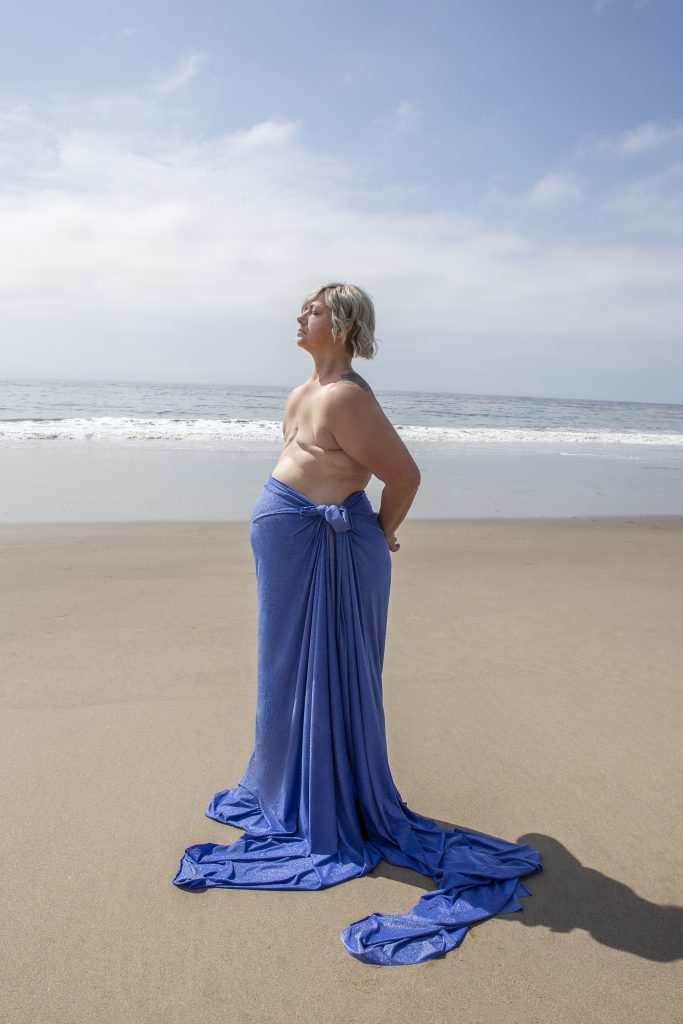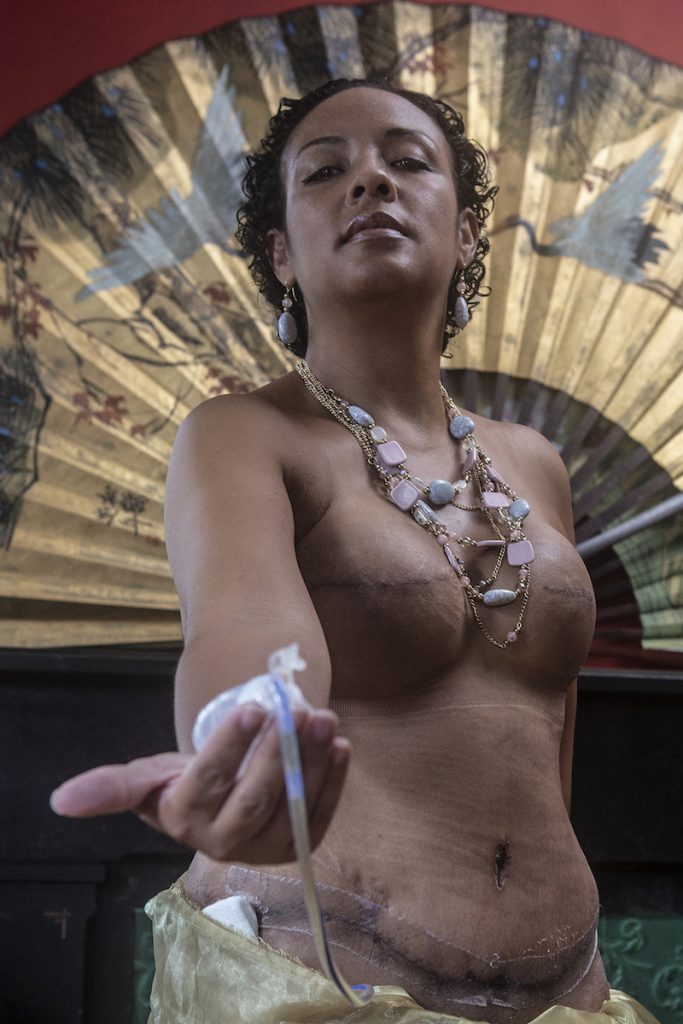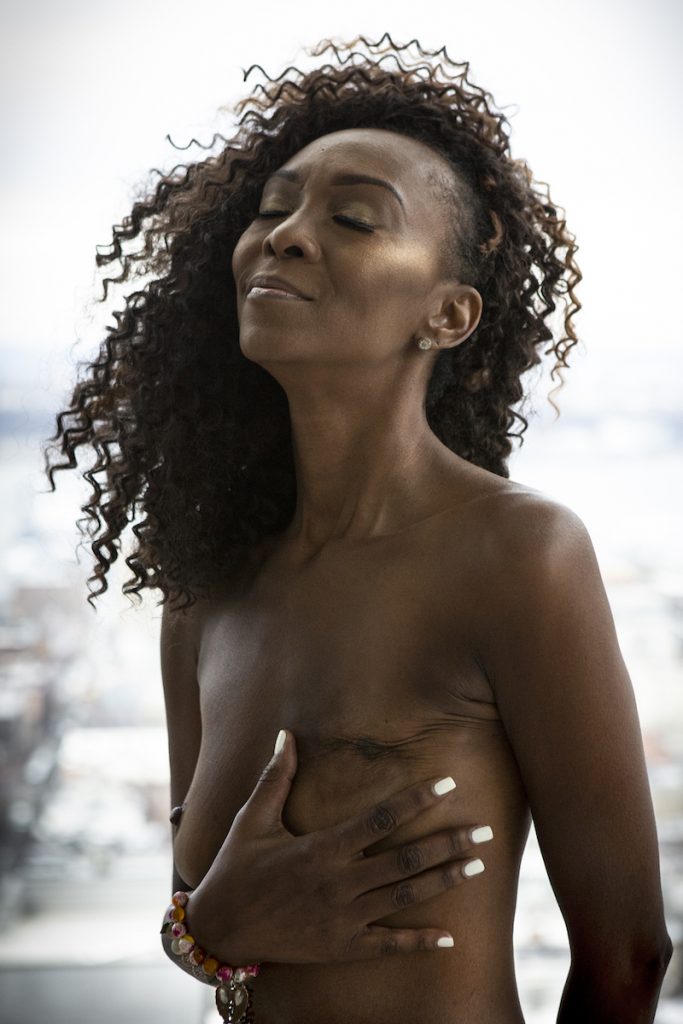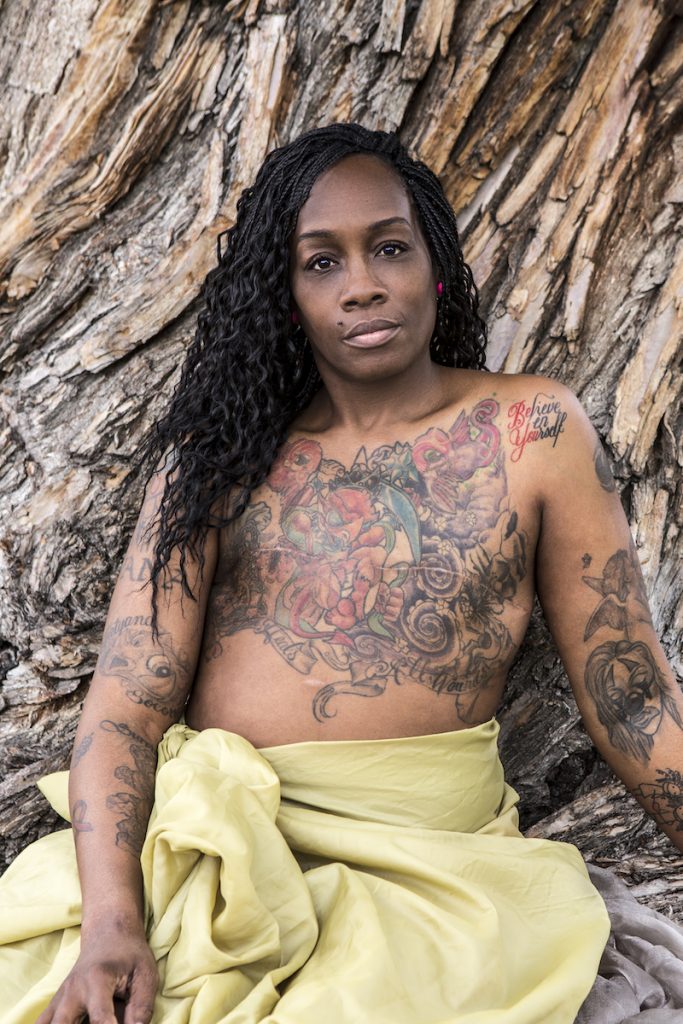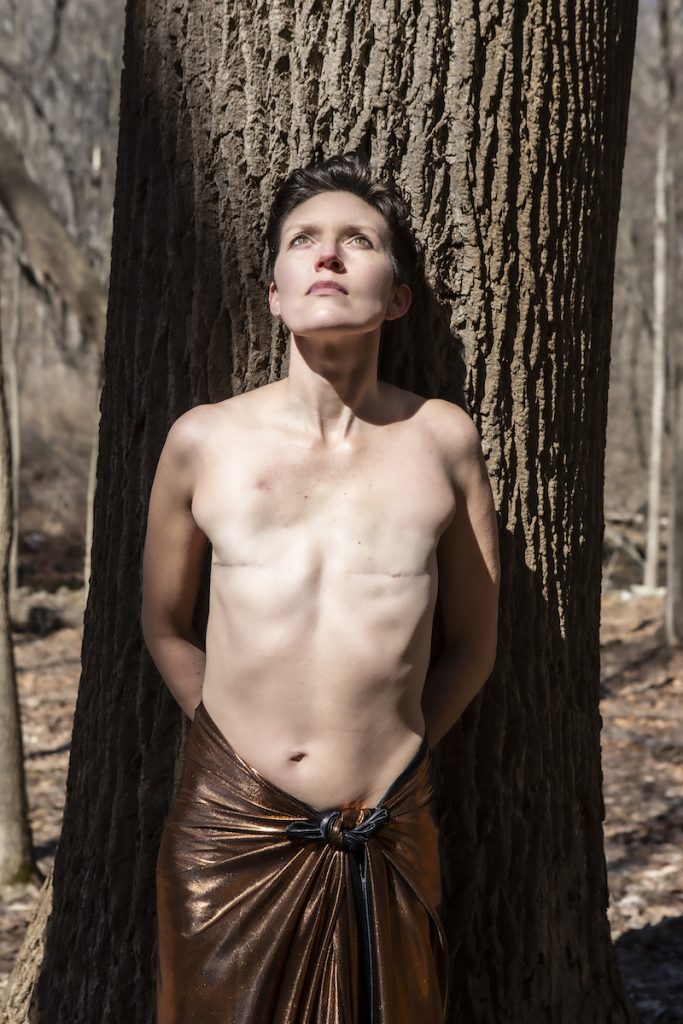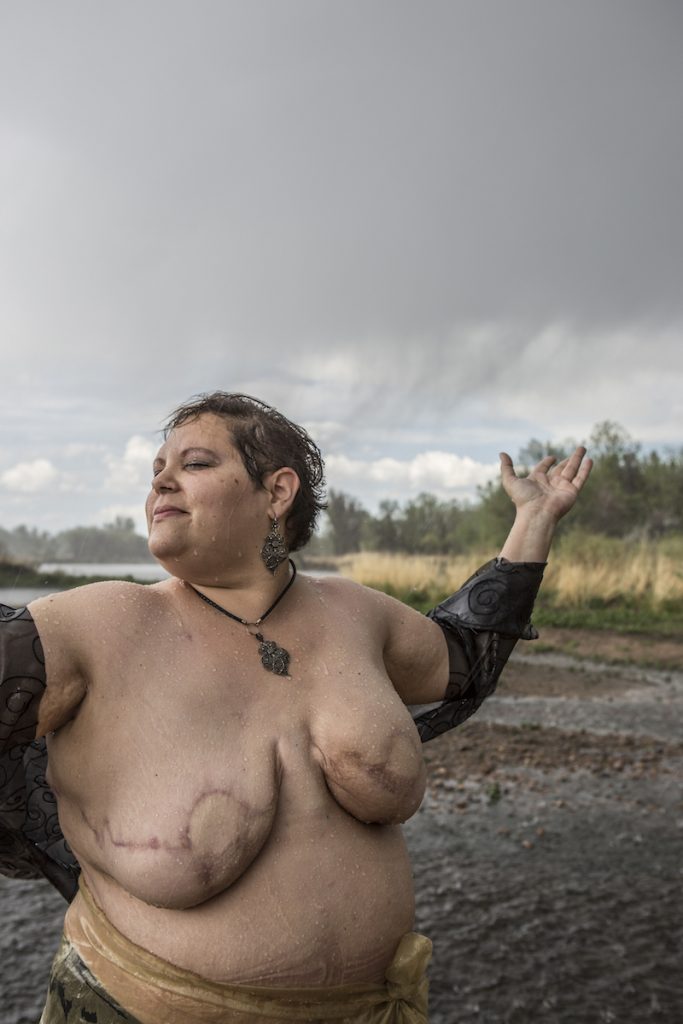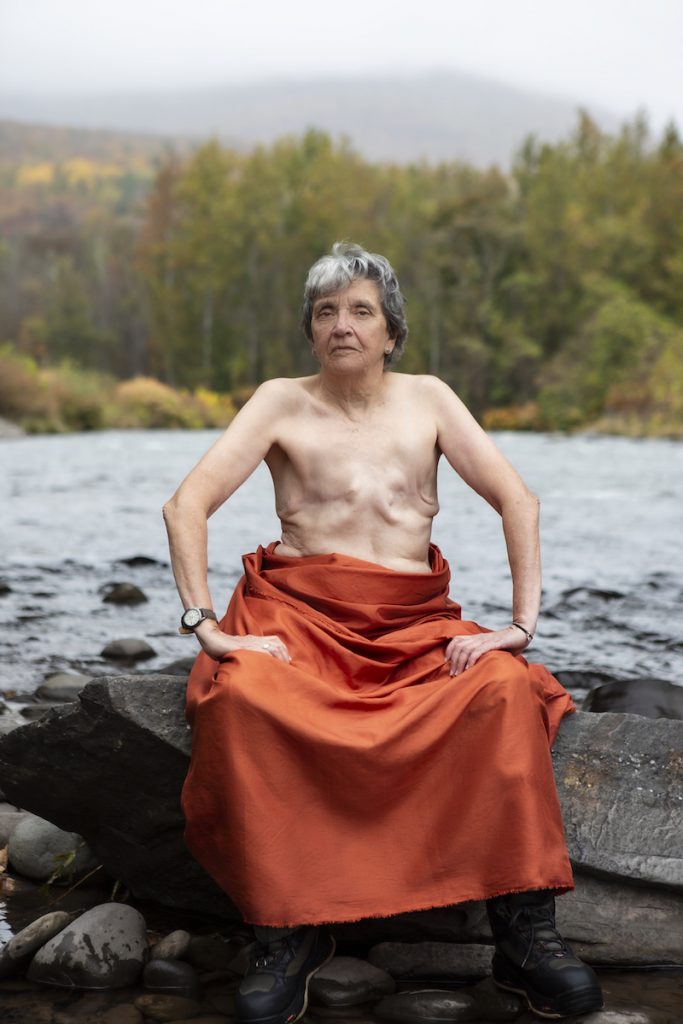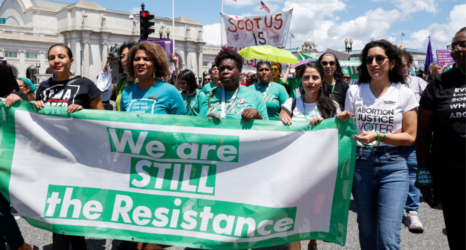They’re sitting, lying and standing, in the woods, in the ocean, in parks and in front of the U.S. Capitol. Some are shirtless; others are draped in fabric, their chests revealing mastectomy scars, reconstructive surgery or intricate tattoos covering a constellation of scars. They’re old and young; fat, thin and in-between; of every race, religion and ethnicity; from every geographic region of the country.
But despite their many visible differences, they’re bound together by more than breast cancer: They are linked through an ambitious portrait series meant to explore body image, illness and self-esteem called The Grace Project.
Charise Isis began the project in 2009. Her earlier collection, The American Stripper, had been well-received and as Isis thought about how she wanted The Grace Project to unfold, several ideas emerged. “I knew I wanted to bring beauty and humanity into what I developed and I also wanted it to have a connection to antiquity,” she told Ms. “The word ‘grace’ came up and I thought to myself, ‘That’s it’: the grace of the body. It was a word that made sense for what I envisioned.”
Isis began the project serendipitously. She had studied acting, then worked as an exotic dancer for several decades, first in Manhattan and later in upstate New York. “While I was dancing, I wanted to do something creative so I took a photography class at the nearby community college,” she explains. “The teacher told us to shoot something we knew, so I took photos of the women I worked with at a strip club in Albany. At that point, we were still using a darkroom to develop our prints and, as it turned out, I was really good at it. I was also good at being able to intuit what the person was feeling as I took their picture. I knew how to respond to them. I just had a knack for it and it felt magical.”
Isis’s subjects agreed, some liking the photos so much that they asked her to take additional shots of them in other contexts. “They wanted sexy, posed bedroom shots,” she said, and over time, referrals began coming her way—friends told friends who told friends—and relatively quickly, she became a sought-after boudoir photographer.
“Shortly after this, an article about me ran in the local press and a man called and hired me to take photos of his wife,” she said. “On the appointed day, this beautiful woman showed up with a bunch of hat boxes and changes of clothes. We got started but she remained covered up even though she was trying to look sexy. She eventually confessed that she’d had breast cancer more than a decade earlier and felt mutilated. Later, while on the couch, she exposed her intact breast and then suddenly threw off her shirt and said, ‘Fuck it. I’m doing this for myself.’ I watched her let go of shame in one incredibly powerful, cathartic moment. Afterwards, I could not stop thinking about the interaction.”
Three weeks later, however, the issue became more personal when a close friend asked Isis to take her photo. “She sounded really grim, and told me she needed a mastectomy, but wanted photos of herself to remember what her body had looked like before surgery. It was really emotional,” Isis said. But the experience essentially laid the foundation for The Grace Project.
As the idea germinated, Isis began asking everyone she interacted with if they knew breast cancer survivors who might want their pictures taken. Many found the idea startling, but calls began to trickle in.
Today, she has completed 430 portraits—about a quarter of them printed on 36 by 54-inch silk panels—that she creates for free. Her goal is 800 photos, representing the daily total of breast cancer diagnoses in the U.S.
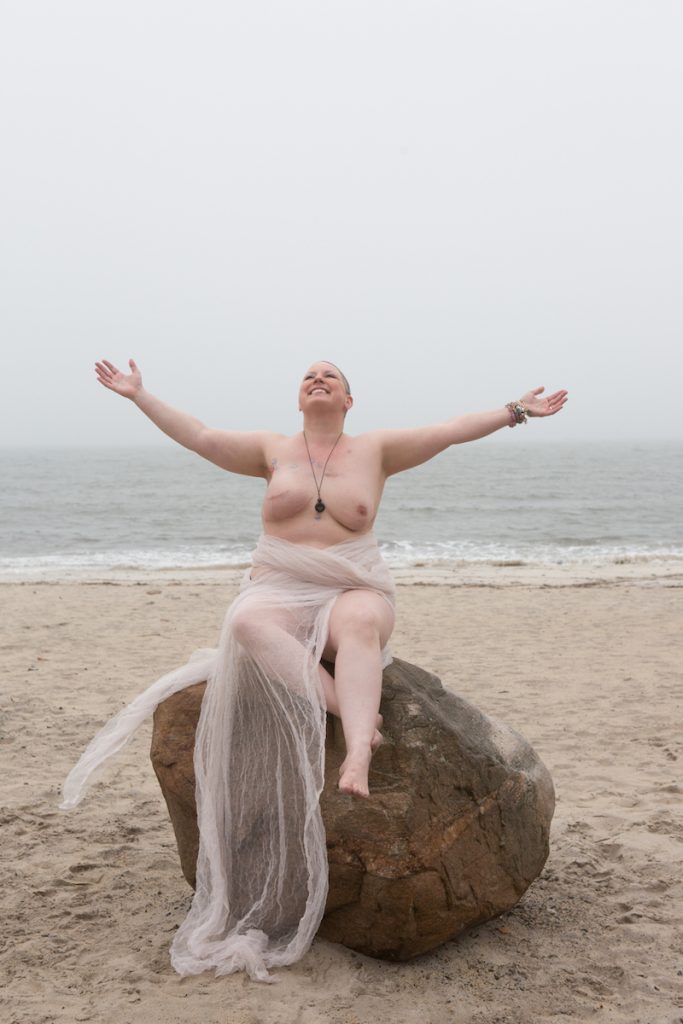
As Isis describes the project’s evolution, she sounds both pleased and gratified. Still, she’s had to deal with a considerable amount of pain. “When I’m taking photos, the most important thing to me is that the person is authentic,” she said. “Some are really proud that they’re being photographed. Others cry through the entire shoot; I always make it clear that that’s okay, that they don’t need to fight their tears.”
“How about your feelings?” I asked.
“I’m dealing with people’s vulnerabilities, and have to be really present with them,” she said. “After a two-week trip where I’ve taken dozens of portraits, I’m pretty exhausted.”
There’s also the issue of death. “This may sound odd, but the project has made me less fearful of dying,” she said. “There was one woman, Carol, who did not live long past our shoot, but she directed her funeral, who would speak, who would perform, who would oil and wash her body. I found her example inspiring.”
Isis is also frequently in touch with surviving family members. “One woman, Corrine, was afraid to tell her husband that she was doing a nude photo shoot, but he was okay with it,” she said. “After Corrine passed, he traveled to a Grace Project exhibition at the University of Cincinnati with his children and grandchildren. The whole family stood in front of the portrait and sobbed. They were so grateful.”
Although Isis’s focus is on creating the most compelling images she can, the project also moderates a closed, but close-knit, online forum for participants to talk, share experiences, and strategize about best practices. “People across the country have made friends with each other through this group,” Isis said. “They rely on one another for support and advice.”
These relationships please Isis. Although she admits the project is financially precarious—wholly dependent on donations from individuals and grants from businesses and foundations—she has so far been able to keep the creditors at bay. While this means couch surfing when she and her assistant, Joules Evans, travel to shoots, this does not faze either woman.
“We get to see women transform into goddesses,” Isis said. “The Grace Project is one of the best things I’ve ever done. For many of the women, standing in front of a camera leads to self-acceptance. Some had been unable to look in a mirror before. As hard as it is to be witness to suffering and sadness, it makes what happened to them matter. Even those that are not with us any longer, live on in the portraits.”
Up next:



